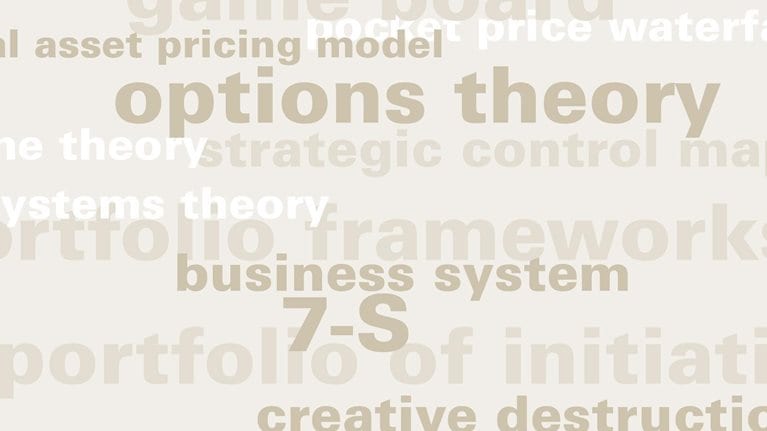As companies mature, they often face declining growth as innovation gives way to inertia. In order to achieve consistent levels of growth throughout their corporate lifetimes, companies must attend to existing businesses while still considering areas they can grow in the future. The three horizons framework—featured in The Alchemy of Growth,1 —provides a structure for companies to assess potential opportunities for growth without neglecting performance in the present.
Horizon one represents those core businesses most readily identified with the company name and those that provide the greatest profits and cash flow. Here the focus is on improving performance to maximize the remaining value. Horizon two encompasses emerging opportunities, including rising entrepreneurial ventures likely to generate substantial profits in the future but that could require considerable investment. Horizon three contains ideas for profitable growth down the road—for instance, small ventures such as research projects, pilot programs, or minority stakes in new businesses.
Time, as noted on the x-axis, should not be interpreted as a prompt for when to pay attention—now, later, or much later. Companies must manage businesses along all three horizons concurrently. Rather, it suggests the cycle by which businesses and ventures move, over time, from horizon two to horizon one, or from horizon three to horizon two. The y-axis represents the growth in value that companies may achieve by attending to all three horizons simultaneously.
The framework continues to be useful, especially in uncertain times. The immediacy of concerns around horizon-one businesses can easily overwhelm other efforts important to the future of a company. C-suite leaders can use the three horizons model as a blueprint for balancing attention to and investments in both current performance and opportunities for growth.

